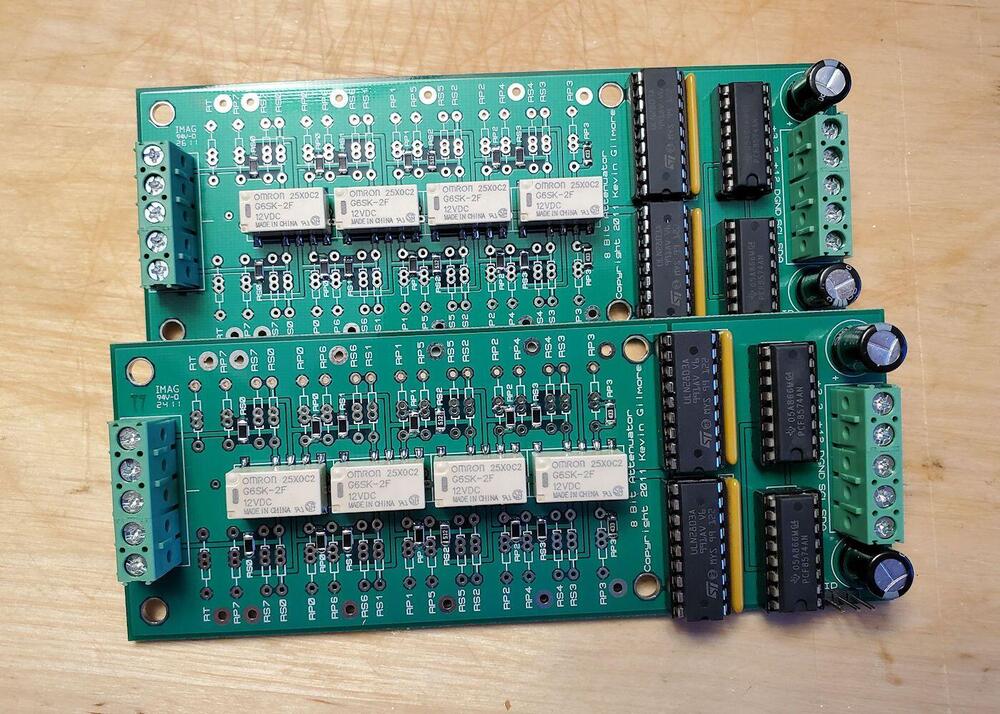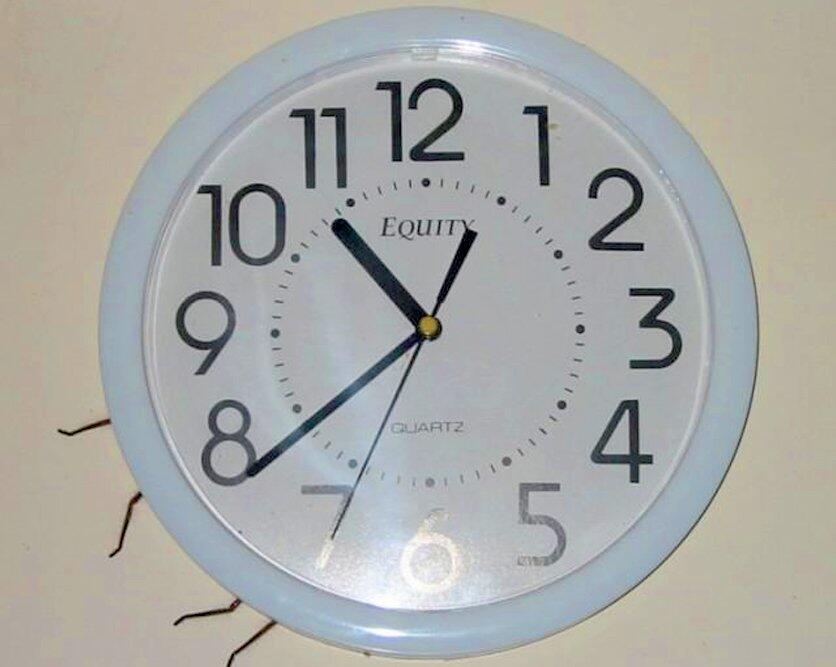-
Posts
2,281 -
Joined
-
Days Won
2
Content Type
Profiles
Forums
Events
Everything posted by Beefy
-
Jebus. How hard would it be for them to just start serving up 16/44.1 FLAC in addition to 16/44.1 MP3? Maybe an exclusive KS/WASAPI mode in the desktop app. That's all it would take for me to be a very happy camper.
-
Yuuuuuum. I do something like that but encrusted with nuts. Basically just a sprinkle some sliced natural almonds on the 'wet' side after it goes in the pan, and smoosh it a little to get a little egg wash on the almonds. Flip it carefully, the almonds stick to the bread as it cooks and get all toasty.
-
No snow forecast here, but is -28°C (-18F) outside right now. Fuck this shit.
-
Sorry to hear you've been sick, man! Your last comment there reminds me of a little something I found funny and depressing: https://www.twitter.com/_tomcashman/status/1433289228830449668
-
Luck is usually all I've got going for me! But I think I have worked it out. I can get a successful build with the all-in-one code in your post from 2017/3/12 using Arduino IDE 1.8.19. My only concern is some very unpleasant turn on/off behaviour. My relays all seem to mute on power down, but then first volume movement on power up temporarily opens full signal volume before settling down. I suspect this is something on the volume board themselves, rather than the software issue. In any case, I have it set up with: 10k linear pot connected to A1, 5V and GND Within VolumeController: Line 101 and 102 both commented out; doesn't change anything, but keeps the program smaller. Line 127, dattnActive = dattnv1 to set it to the V1 board. Not even sure this is necessary, but it works. Line 147 myPot.setMinMax(0, 255); needed to allow 255 steps for maximum volume Within DATTN.cpp Line 105, vSet = 255 - v; needed to allow 255 steps for maximum volume Within font.h: Line 26 "unsigned char *_data[];" this is the only line that really stops it building, and can just be commented out. Within rotarypot.cpp, some parameters need to be tweaked to give faster volume control. Otherwise, small volume changes take an excruciatingly long time with very gentle pot movements. Zero idle relay chatter with these aggressive settings, surprisingly enough. Currently I have changed: Line 17 maxValue = 255 Line 21 potChangeThreashold = 1 Line 22 potLockThreashold = 5 Now, I just need to test balanced configuration. Seems to be just a change on line 126, from false to true: dattnV1 = new DATTN(1.0, true);
-
Blast from the past! After 10 years, I finally managed to build two v1.0 of these boards. A couple of questions, if anybody is still familiar with the project.... I have used the original code from @Kerry the get the relays clacking away with an encoder and Arduino Uno, I just needed to replace the deprecated wire.send with wire.write. But I really want to use a potentiometer. The code from @stv1756 won't build (incompatible types in assignment of 'int' to 'int [12]'), and it seems like Kerry's 'all in one' code is more advanced - but I'm not nearly clever enough to work out how to configure it for the v1.0 boards. I can work out how to disable the OLED (comment out "active OLED = .... lines), but I'm still throwing compile errors (flexible array member 'Font::_data' not at end of 'class Font') which suggests it is still trying to include a display, and I'm obviously missing several configuration options. Anybody got any hints, or known-good code that works with v1.0 and a potentiometer?
-
I like using internal tooth lock washers for the grounding points. The teeth cut through the anodising and paint, and prevent the screws from loosening. Also, I use more than one chassis grounding point (usually at the connection between the side and base plates), just to be absolutely sure.
-
Very sad news. I didn't know Steve very well, but he was such a valuable contributor for so many years. Godspeed, Steve.
-
Series dropping resistor. I used a few hundred ohms on a 5V power supply, about 7k ohms on a 27V power supply. The internal resistor value and LED Vf aren't specified, so there was a tiny bit of trial and error to get the value exactly right, but I managed to get pretty close to 3mA on the two different power supplies with spare parts.
-
Ah, so you want the entire bezel to sit flush? That could look quite interesting. Just note that the way the ULV7 switches slope inwards around the edge, you might actually have a gap. I think you'd only need a 0.5 mm recess on the entire 2.0 mm that it normally stands proud of panel to get a meld-into-the-panel effect. In any case, I just measured the two 25 mm switches installed in the gear on my desk as best as I could with calipers. Came up with 24.92 ± 0.2 mm over several measurements.
-
Looks like 000 on a numerical display...?
-
That Muses project looks really neat. But yeah, availability of the chips is quite bad, and it will almost certainly preclude it as a pre-Xmas project. Will definitely keep an eye on it for new builds though, so thanks! I'm sure the Kevin/Kerry option is probably the best, but making my own boards is the difference between a weekend soldering/wiring project, and learning an entire new skill. Unfortunately, I think my brain is full.
-
So I'm curious what the current SOTA is with respect to non-potentiometer volume control for a balanced DIY amp. Context: I'm working through an repair/refine/replace blitz of all my DIY gear. My Exstata - which if you can believe it is still kicking after 10+ years - has one of the dual PGA2320 volume controls that Marc developed way back then. It works great, and was incredible $$$ value, but it seems ripe picking for a small update project. I see the TPA Joshua Tree is still kicking, still dead easy to implement, still has limitations of variable input impedance and always-on relays. AMB's δ1 uses latching relays and has constant impedance, but having to do a full Arduino control board build seems a but nutty for just an attenuator. And Kevin was busy a few years back with something that seemed technically excellent, but getting PCB's and programming done is probably way beyond my skillset and the time I am willing to invest. Thoughts or suggestions? Thanks!
-

stax mafia circuit boards see updated links on page 5
Beefy replied to kevin gilmore's topic in Do It Yourself
Both links are viewable. Not found is the skill for me to do anything with it. -
Awesome! Like @Kerry I'd love to hear your thoughts. I have a ThinkPad X1 Yoga and work/home docking stations, and find it is just about perfect for mixed desktop/portable/tablet usage. The Studio's fold down screen seems like it would be even better than the fold-back Yoga.
-
Of course *facepalm*
-
Doug might have been confused about the 'muted' part, I certainly was. Is that a reference to the sound signature?
-
No, no, I assure you that it is perfect in every conceivable way. The sound, the design, the way it makes my bowel movements smell like fresh cinnamon rolls.
-
Some people are panic dancers, but thankfully I'm a panic freezer.
-
Ha! My car experience is a little different; one dropped into my lap at highway speeds, when I dropped my sun visor.
-
The fun part about Australia is that the poisonous critters aren't even the most scary. The huntsman spider is a huge but generally chill dude/dame that will normally just eat other crawling bugs. But if you surprise or deliberately annoy that thing, the fucker will chase you across the room and out of the house. It won't kill you with venom, but that bite hurts. And the way they hide..... You don't want to know the places I've found huntsman spiders. The classic example is 'clock spider'.....
-
-
I still have a copy of your M3 BOM on my computer. This all would have been much harder without your efforts, so thanks for everything you've done over the years!








